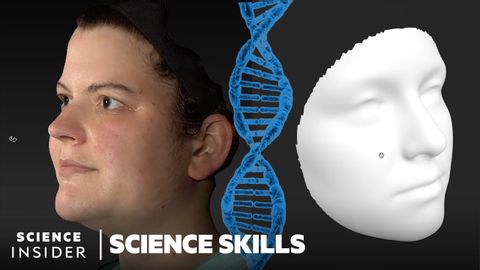科學家們為了從你的DNA中創造出你的面孔,走了多遠? (How Far Scientists Go To Create Your Face From Your DNA | Science Skills)
 沒有此條件下的單字
沒有此條件下的單字US /spɪˈsɪfɪk/
・
UK /spəˈsɪfɪk/
US /əˈsoʊʃiˌeɪt/
・
UK /ə'səʊʃɪeɪt/
- n. (c.)同事;合夥人
- v.t./i.有關聯的;關聯
- adj.副手
US /ˈækjərɪt/
・
UK /ˈækjərət/
- n. (c./u.)公有地;公共用地;廣場
- adj.共用的;常見的;普通的;普遍的;粗俗的;普通名詞
